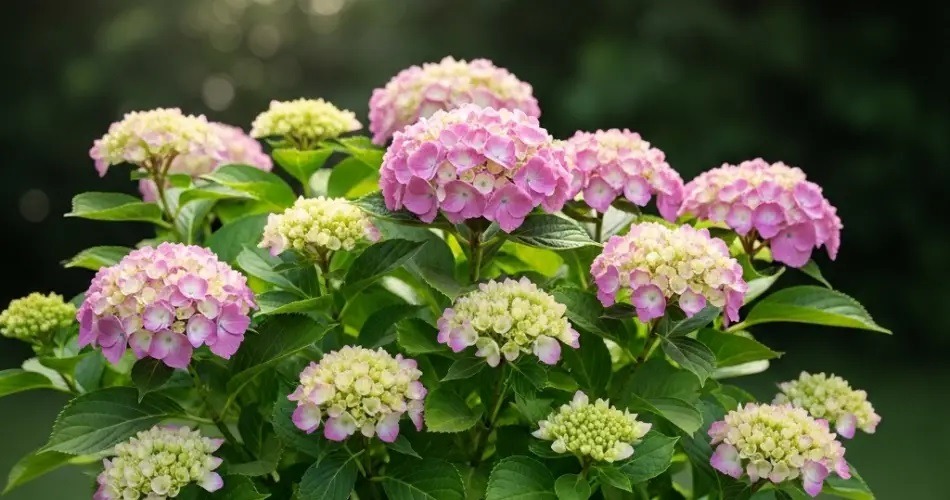Hydrangeas are beloved for their large, showy blooms and ability to brighten any garden or indoor space with vibrant color. However, many gardeners struggle to keep their hydrangeas thriving. These beautiful plants can sometimes wilt, lose flowers, or even die if their needs aren’t met properly.
If you’ve had trouble keeping your hydrangea healthy or want to ensure your plant flourishes year after year, this comprehensive guide is for you. By understanding the essential care tips and environmental requirements, you’ll be able to enjoy lush, blooming hydrangeas that become the centerpiece of your home or garden.
Why Hydrangeas Sometimes Struggle
Hydrangeas are moderately hardy, but their health depends heavily on the right conditions:
-
Watering issues: Both under- and overwatering can stress the plant.
-
Improper sunlight: Too much direct sun can scorch leaves, while too little reduces flowering.
-
Soil problems: Hydrangeas prefer rich, well-draining soil that retains moisture.
-
Nutrient deficiencies: Lack of key nutrients affects leaf and flower development.
-
Temperature and humidity: Extremes can damage buds and foliage.
Many hydrangea deaths happen because one or more of these factors are overlooked.
Choosing the Right Hydrangea Variety
There are several types of hydrangeas, each with slightly different care needs:
-
Bigleaf hydrangea (Hydrangea macrophylla): Known for large mophead or lacecap flowers; prefers partial shade and acidic to neutral soil.
-
Panicle hydrangea (Hydrangea paniculata): Tolerant of full sun and colder climates; has cone-shaped flower clusters.
-
Smooth hydrangea (Hydrangea arborescens): Hardy and adaptable; prefers partial sun and moist soil.
-
Oakleaf hydrangea (Hydrangea quercifolia): Noted for lobed leaves and seasonal color changes; needs well-drained soil and some shade.
Knowing your variety helps tailor care for optimal growth.
Soil and Planting Tips
Hydrangeas thrive in soil rich in organic matter. When planting:
-
Choose a spot with morning sun and afternoon shade to protect leaves from intense heat.
-
Prepare soil by mixing compost or aged manure to improve fertility and moisture retention.
-
Ensure good drainage—waterlogged roots can lead to root rot.
-
For potted hydrangeas, use high-quality potting soil with good drainage and aeration.
Watering Your Hydrangea
Hydrangeas are thirsty plants, especially in warm weather. Follow these watering guidelines:
-
Keep soil consistently moist but not soggy. Check soil regularly and water when the top inch feels dry.
-
Use mulch around the base to help retain moisture and regulate soil temperature.
-
Avoid wetting leaves to reduce fungal diseases.
-
During hot spells, water deeply twice a week.
Fertilizing for Vibrant Blooms
Feeding your hydrangea supports healthy growth and flower production:
-
Apply a balanced, slow-release fertilizer in spring as new growth begins.
-
For acidic soil-loving varieties, you can add soil amendments like sulfur or aluminum sulfate to encourage blue blooms.
-
Avoid excessive nitrogen, which promotes leaf growth but reduces flowering.
Light and Temperature Needs
Hydrangeas prefer bright, indirect light or dappled shade. Too much direct sunlight can cause leaf burn, while too little light results in fewer flowers.
They tolerate a range of temperatures but may need protection from frost in colder zones. Mulching and covering the plant during winter helps protect roots and buds.
Pruning Your Hydrangea
Proper pruning encourages healthy structure and flowering:
-
For bigleaf and oakleaf hydrangeas, prune immediately after flowering, as they bloom on old wood.
-
For panicle and smooth hydrangeas, prune in late winter or early spring since they bloom on new wood.
-
Remove dead or damaged branches to improve airflow.
-
Avoid heavy pruning that removes too many flowering buds.
Common Issues and How to Fix Them
-
Yellowing leaves: Could be due to overwatering, poor drainage, or nutrient deficiencies.
-
Wilting: Usually from underwatering or root problems.
-
No flowers: Check light exposure, pruning timing, and fertilizer balance.
-
Powdery mildew or fungal spots: Improve airflow, avoid wetting leaves, and treat with appropriate fungicides.
Tips for Growing Hydrangeas Indoors
While hydrangeas are more common outdoors, they can thrive indoors with the right care:
-
Place near a bright window with filtered sunlight.
-
Keep humidity high by misting leaves or using a humidifier.
-
Water regularly, ensuring the pot drains well.
-
Use containers with drainage holes and avoid letting the plant sit in standing water.
Final Thoughts
Hydrangeas are stunning, rewarding plants that can thrive with the right care. By understanding their water, light, soil, and pruning needs, you can avoid common pitfalls that lead to wilting or dying plants. Whether you grow hydrangeas in your garden or in pots at home, this guide helps ensure they remain healthy and vibrant season after season.
With consistent care, your hydrangea will reward you with breathtaking blooms and lush foliage, adding beauty and life to your space for years to come.
